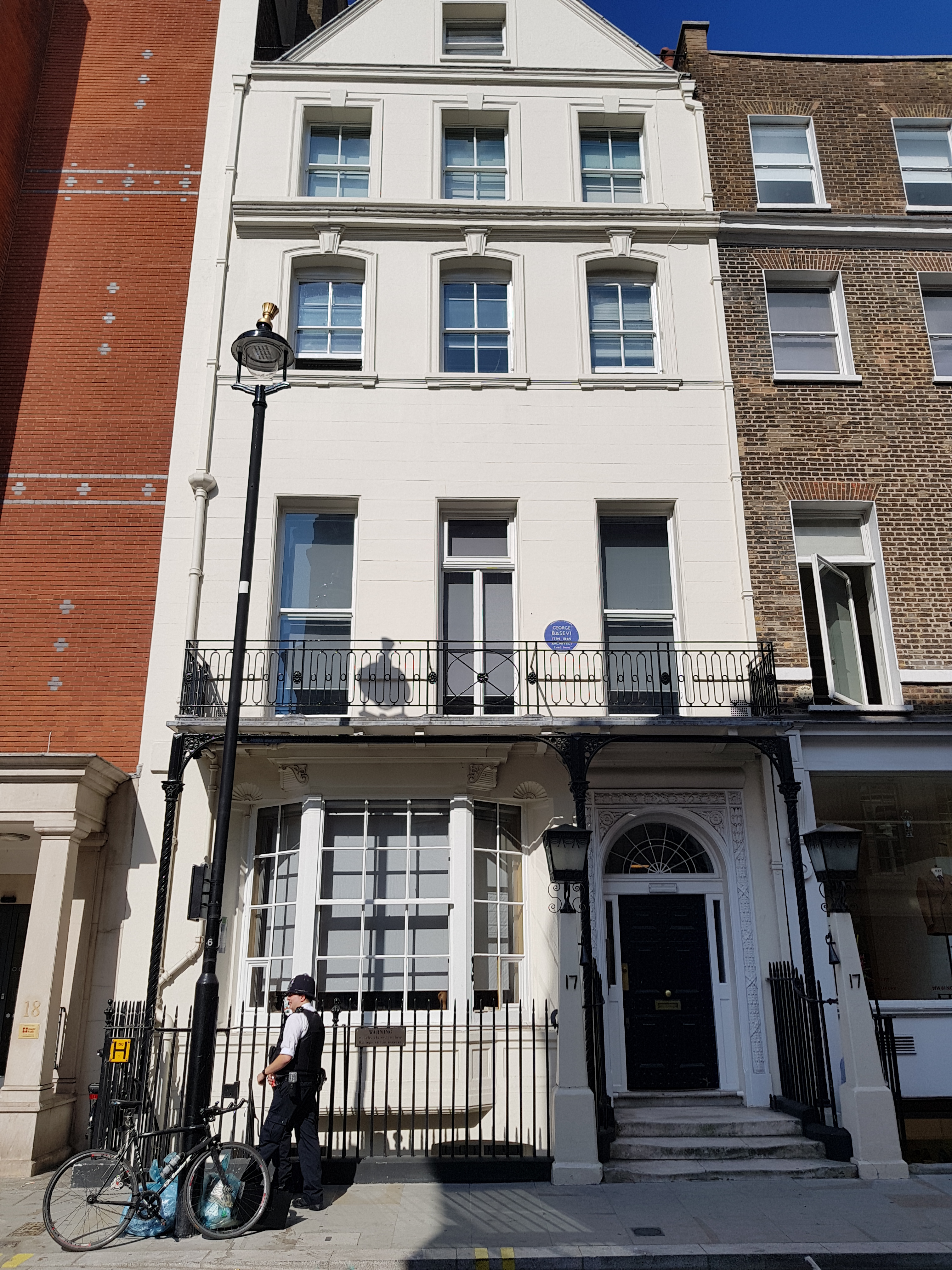Burlington Fine Arts Club on:
[Wikipedia]
[Google]
[Amazon]
 The Burlington Fine Arts Club (established 1866; dissolved 1952) was a
The Burlington Fine Arts Club (established 1866; dissolved 1952) was a
 The Burlington Fine Arts Club (established 1866; dissolved 1952) was a
The Burlington Fine Arts Club (established 1866; dissolved 1952) was a London
London is the capital and List of urban areas in the United Kingdom, largest city of England and the United Kingdom, with a population of just under 9 million. It stands on the River Thames in south-east England at the head of a estuary dow ...
gentlemen's club based at 17 Savile Row
Savile Row (pronounced ) is a street in Mayfair, central London. Known principally for its traditional bespoke tailoring for men, the street has had a varied history that has included accommodating the headquarters of the Royal Geographical ...
.
The club had its roots in the informal Fine Arts Club, a gathering of amateur art enthusiasts, founded by John Charles Robinson
Sir John Charles Robinson (16 December 1824, Nottingham – 10 April 1913, Swanage) was an English painter and etcher, although he is now better remembered as an art collector and curator.
Biography
He was raised by his grandfather, who was a bo ...
, that met in Marlborough House
Marlborough House, a Grade I listed mansion in St James's, City of Westminster, London, is the headquarters of the Commonwealth of Nations and the seat of the Commonwealth Secretariat. It was built in 1711 for Sarah Churchill, Duchess of Marl ...
in 1856, moving to South Kensington
South Kensington, nicknamed Little Paris, is a district just west of Central London in the Royal Borough of Kensington and Chelsea. Historically it settled on part of the scattered Middlesex village of Brompton. Its name was supplanted with ...
from 1857. In 1866 they formalised the new club, although informal meetings under the Fine Arts Club banner continued to be held separately until 1874, using the Burlington as its base.
The original Burlington clubhouse occupied the upper three floors of 177 Piccadilly from 1866 until 1869, when the club moved to its Savile Row premises, where it remained for the rest of its existence. The club aimed to evoke the atmosphere of a typical gentlemen's club for those interested in art, as well as to provide a showcase for amateur artists. Part of the clubhouse doubled as a regular exhibition venue, the location having been selected for its proximity to Mayfair art dealers.
Notable members included James McNeill Whistler, John Ruskin
John Ruskin (8 February 1819 20 January 1900) was an English writer, philosopher, art critic and polymath of the Victorian era. He wrote on subjects as varied as geology, architecture, myth, ornithology, literature, education, botany and pol ...
, Dante Gabriel Rossetti
Gabriel Charles Dante Rossetti (12 May 1828 – 9 April 1882), generally known as Dante Gabriel Rossetti (), was an English poet, illustrator, painter, translator and member of the Rossetti family. He founded the Pre-Raphaelite Brotherhoo ...
, William Michael Rossetti
William Michael Rossetti (25 September 1829 – 5 February 1919) was an English writer and critic.
Early life
Born in London, Rossetti was a son of immigrant Italian scholar Gabriele Rossetti and his wife Frances Rossetti ''née'' Polidor ...
, Edwin Lutyens and the art collector Henry Vaughan
Henry Vaughan (17 April 1621 – 23 April 1695) was a Welsh metaphysical poet, author and translator writing in English, and a medical physician. His religious poetry appeared in ''Silex Scintillans'' in 1650, with a second part in 1655.''Oxfo ...
who gave Constable's ''The Hay Wain
''The Hay Wain'' – originally titled ''Landscape: Noon'' – is a painting by John Constable, completed in 1821, which depicts a rural scene on the River Stour between the English counties of Suffolk and Essex. It hangs in the National Galler ...
'' to the nation.Herrmann, L. (2004, September 23). Vaughan, Henry (1809–1899), art collector. Oxford Dictionary of National Biography. Retrieved 31 Mar. 2021, from https://www.oxforddnb.com/view/10.1093/ref:odnb/9780198614128.001.0001/odnb-9780198614128-e-28131
The Second World War
World War II or the Second World War, often abbreviated as WWII or WW2, was a world war that lasted from 1939 to 1945. It involved the vast majority of the world's countries—including all of the great powers—forming two opposi ...
proved a terrible strain on the Burlington, its last exhibition having been held just prior to the outbreak of war in 1939. With dwindling membership numbers after the war, the club's committee realised that it could no longer afford the lease on its clubhouse. An attempt was made to raise the funds to move to 34 Great Cumberland Place, but this failed. In late 1951, the committee voted for the club to go into liquidation, with effect the following year.
The club's assets were valued at some £14,500. With most of the members waiving their rights to shares in the club, £13,070, 12s, 5d went to the National Art-Collections Fund (later The Art Fund
Art Fund (formerly the National Art Collections Fund) is an independent membership-based British charity, which raises funds to aid the acquisition of artworks for the nation. It gives grants and acts as a channel for many gifts and bequests, as ...
) in commemoration of the ''Burlington Fine Arts Club''.
See also
*List of London's gentlemen's clubs
This is a list of gentlemen's clubs in London, United Kingdom, including those that no longer exist or merged, with an additional section on those that appear in fiction. Many of these clubs are no longer exclusively male.
Extant clubs
Defun ...
* Stacey J. Pierson, ''Private Collecting, Exhibitions, and the Shaping of Art History in London: The Burlington Fine Arts Club'' (The Histories of Material Culture and Collecting, 1700–1950) Routledge, 2017.
References
* Editorial, ''The Burlington Magazine'', Volume XCIV, April 1952, pp. 97–99 {{Coord, 51.5112, -0.1405, display=title Gentlemen's clubs in London Arts organizations established in 1866 1866 establishments in England